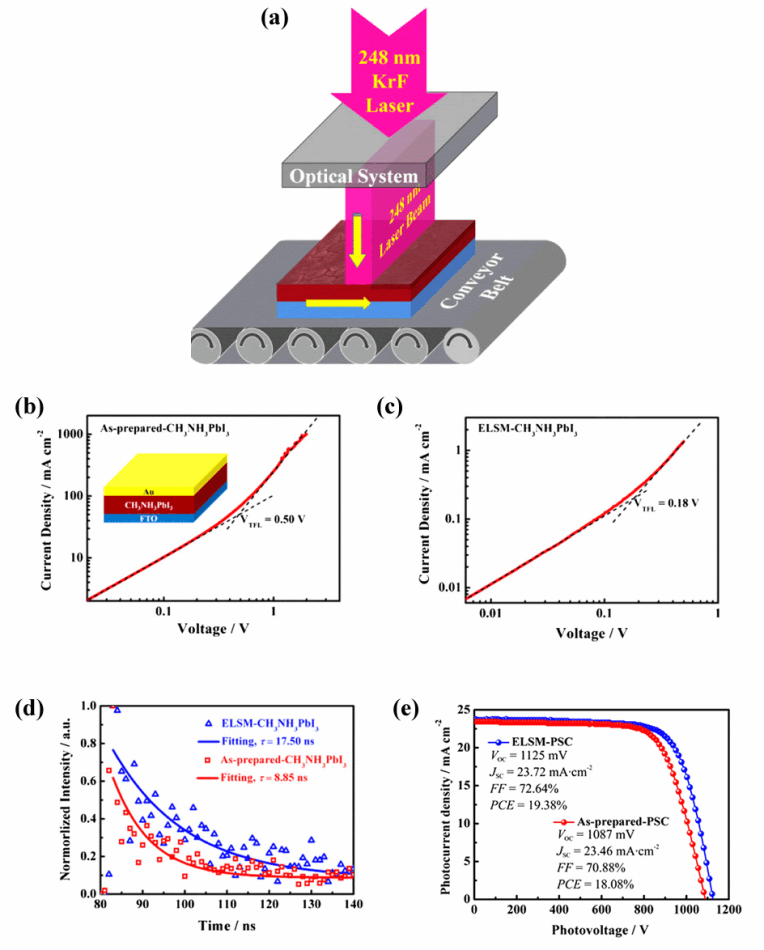May 22 2019
Researchers at Hefei Institutes of Physical Science achieved improved performance of perovskite solar cells (PSCs) using an excimer laser.
 Figure 1. (a) Schematic illustration of the ELSM process employing the 248 nm KrF excimer laser. The J–V curves of the electron-only device utilized for estimating the trap densities of the (b) as-prepared-CH3NH3PbI3 film and (c) ELSM-CH3NH3PbI3 films. (d) Normalized TRPL spectra of the as-prepared- and ELSM-CH3NH3PbI3 films. (e) The J–V curves of the champion PSCs based on the as-prepared- and ELSM-CH3NH3PbI3 films. (Image credit: SHAN Xueyan)
Figure 1. (a) Schematic illustration of the ELSM process employing the 248 nm KrF excimer laser. The J–V curves of the electron-only device utilized for estimating the trap densities of the (b) as-prepared-CH3NH3PbI3 film and (c) ELSM-CH3NH3PbI3 films. (d) Normalized TRPL spectra of the as-prepared- and ELSM-CH3NH3PbI3 films. (e) The J–V curves of the champion PSCs based on the as-prepared- and ELSM-CH3NH3PbI3 films. (Image credit: SHAN Xueyan)
Organic-inorganic hybrid perovskite solar cells are still gaining significant attention because of their exceptional photovoltaic performance and low cost.
Typically, organic-inorganic hybrid perovskite films are developed through solution technique at low temperature, which can build firm solar cells as well as possess the natural benefits of creating flexible solar cells. However, the surface defects of perovskite films hamper the further enhancement of the performance of PSCs.
Meanwhile, the preparation process of the normal ETL of PSCs demands annealing and crystallization at 400–500 °C. This temperature is beyond what could be endured by the common flexible substrates and restricts the development of flexible PSCs.
To deal with the above-mentioned issues, researchers introduced an excimer laser into the study of PSCs.
During the study, they achieved low-temperature excimer laser annealing (ELA) of gallium-doped zinc oxide (GZO) electron transport layer (ETL) and quick excimer laser surface modification (ELSM) of CH3NH3PbI3 films.
These studies were accomplished by Prof. FANG Xiaoming’s study group with Anhui Institute of Optics and Fine Mechanics (AIOFM), Hefei Institutes of Physical Science.
The work is supported by the National Natural Science Foundation of China, CAS Pioneer Hundred Talents Program, CAS-JSPS Joint Research Projects, and the Key Laboratory of Photovoltaic and Energy Conservation Materials of the Chinese Academy of Sciences.